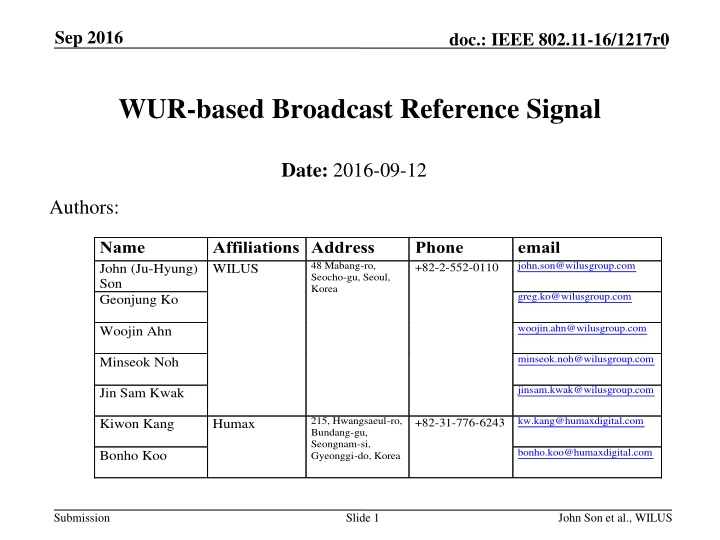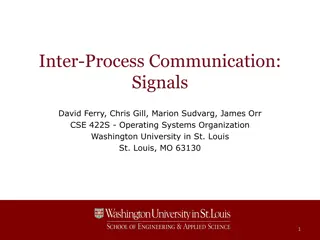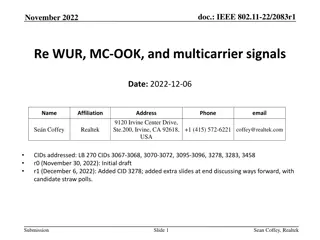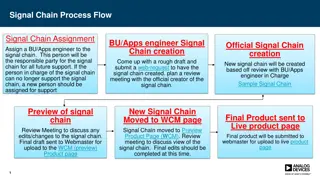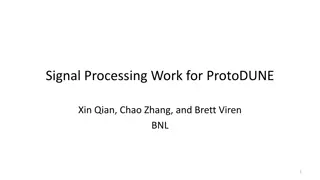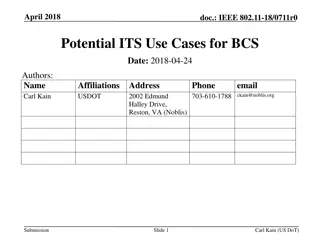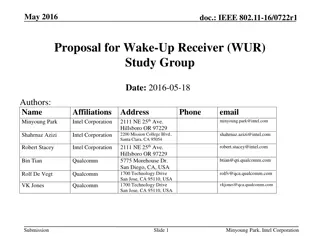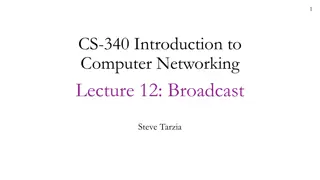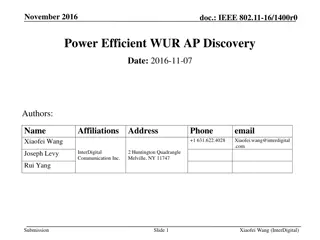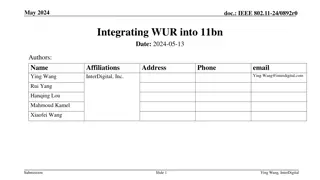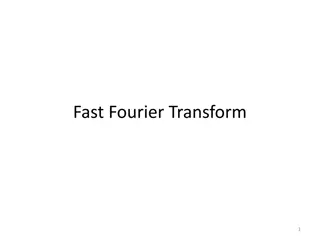WUR-based Broadcast Reference Signal
This document discusses the implementation of a WUR-based broadcast reference signal in IEEE 802.11-16 networks. The reference signal is proposed to help STAs monitor connectivity status and adjust RX sensitivity for power saving in scenarios where WUR-based sleeping STAs need to maintain connectivity with the AP.
Download Presentation

Please find below an Image/Link to download the presentation.
The content on the website is provided AS IS for your information and personal use only. It may not be sold, licensed, or shared on other websites without obtaining consent from the author.If you encounter any issues during the download, it is possible that the publisher has removed the file from their server.
You are allowed to download the files provided on this website for personal or commercial use, subject to the condition that they are used lawfully. All files are the property of their respective owners.
The content on the website is provided AS IS for your information and personal use only. It may not be sold, licensed, or shared on other websites without obtaining consent from the author.
E N D
Presentation Transcript
Sep 2016 doc.: IEEE 802.11-16/1217r0 WUR-based Broadcast Reference Signal Date: 2016-09-12 Authors: Name John (Ju-Hyung) Son Geonjung Ko Affiliations Address WILUS Phone +82-2-552-0110 email john.son@wilusgroup.com 48 Mabang-ro, Seocho-gu, Seoul, Korea greg.ko@wilusgroup.com woojin.ahn@wilusgroup.com Woojin Ahn minseok.noh@wilusgroup.com Minseok Noh jinsam.kwak@wilusgroup.com Jin Sam Kwak 215, Hwangsaeul-ro, Bundang-gu, Seongnam-si, Gyeonggi-do, Korea kw.kang@humaxdigital.com +82-31-776-6243 Kiwon Kang Humax bonho.koo@humaxdigital.com Bonho Koo Submission Slide 1 John Son et al., WILUS
Sep 2016 doc.: IEEE 802.11-16/1217r0 Introduction WUR AP WUR STA Beacon / Data 802.11 TR 802.11 TR 802.11 Transceiver Wakeup Packet WUR Wake Up Radio In 802.11 network, AP broadcasts periodic Beacon frame STAs receive BSS operation information STAs can monitor the connectivity status between AP WUR-based power saving STAs, during when there is no wake-up packet transmission STAs cannot monitor the connectivity status between AP STAs do not know whether they are within the WUR coverage of the AP We propose that WUR AP to periodically broadcast a reference signal for WUR STAs Submission Slide 2 John Son et al., WILUS
Sep 2016 doc.: IEEE 802.11-16/1217r0 WUR-based Broadcast Reference Signal 802.11 Beacon Frame 802.11 Beacon Frame 802.11 Beacon Frame WUR Ref Sig WUR Ref Sig 802.11 TR WUR AP may periodically broadcast the reference signal In scenarios where WUR-based sleeping STAs are required to monitor the WUR connectivity between AP The signal s transmission period can be set much longer than the Beacon transmission period The length of the signal can be shorter than normal wake-up packets, only required to contain the transmitter information WUR-based STAs can monitor the reference signal Measure the signal strength and monitor WUR connectivity with its AP Power consumption of the reference signal reception would not be much higher than that of the idle listening Slide 3 Submission John Son et al., WILUS
Sep 2016 doc.: IEEE 802.11-16/1217r0 Scenario 1: WUR RX sensitivity control A B WUR range In scenarios where WUR STAs want to minimize their idle listening power consumptions Without WUR reference signal: STAs cannot measure the relative distance to its AP, thus maintain their WUR with the maximum RX sensitivity Maintaining better RX sensitivity consumes more power in WUR [2] With WUR reference signal: STA A receives the signal with very high RSSI, adjusting its WUR RX sensitivity to reduce power consumption STA B receives the signal with low RSSI, adjusting its WUR RX sensitivity to better receive wake-up packets Submission Slide 4 John Son et al., WILUS
Sep 2016 doc.: IEEE 802.11-16/1217r0 Scenario 2: WUR coverage monitoring before sleep A WUR range Data range In scenarios where a certain STA has different connectivity range between WUR and 802.11 with the associated AP Without WUR reference signal: STA A can falsely enter WUR-based power save mode in locations where it can not receive wake-up packets With WUR reference signal: STA A monitors the reference signal, and decides to enter WUR-based power save mode only when the signals are stably received Submission Slide 5 John Son et al., WILUS
Sep 2016 doc.: IEEE 802.11-16/1217r0 Scenario 3: WUR coverage monitoring during sleep A B WUR range mobility In scenarios where STAs have mobility during sleep Without WUR reference signal: STAs cannot measure the distances to its AP, thus do not handle the coverage lost [3] With WUR reference signal: STA A receives AP s reference signal with very low RSSI, may notify to its 802.11 transceiver STA B does not receive the reference signal for a certain time, should notify to its 802.11 transceiver Submission Slide 6 John Son et al., WILUS
Sep 2016 doc.: IEEE 802.11-16/1217r0 Scenario 4: Network discovery during sleep WUR range In scenarios where STAs want to discover nearby 802.11 network without turning on their 802.11 transceiver Without WUR reference signal: STAs do not know the availability of network until they turn on 802.11 transceiver With WUR reference signal: STAs receive the reference signal from nearby AP, thus may wake-up 802.11 transceiver to notify network availability To minimize unnecessary wake-up of 802.11 TR, WUR may limit the wake-up with pre-defined conditions Submission Slide 7 John Son et al., WILUS
Sep 2016 doc.: IEEE 802.11-16/1217r0 Conclusions WUR should enable STAs to remain low-power state without sacrificing instant reachability WUR AP may periodically broadcast reference signal WUR STAs can periodically monitor connectivity status between AP The length of the signal would be shorter than normal wake-up packets Small increase in the signal decoding overhead and channel occupancies with tradeoff of other benefits Benefits for WUR STAs STAs can adjust their RX sensitivity to reduce idle power consumptions STAs can monitor WUR coverage before/during sleep state STAs can discover nearby BSSs with minimal power consumptions Submission Slide 8 John Son et al., WILUS
Sep 2016 doc.: IEEE 802.11-16/1217r0 References [1] 11-16/0605r3, Proposal for LP-WUR Study Group [2] N. Seyed Mazloum and O. Edfors, Performance Analysis and Energy Optimization of Wake-Up Receiver Schemes for Wireless Low-Power Applications , IEEE Trans. on Wireless Communications, Vol. 13, No. 12, pp. 7050-7061, 2014. [3] 11-16/0931r0, Demand on Roaming for WUR, ZTE Submission Slide 9 John Son et al., WILUS
